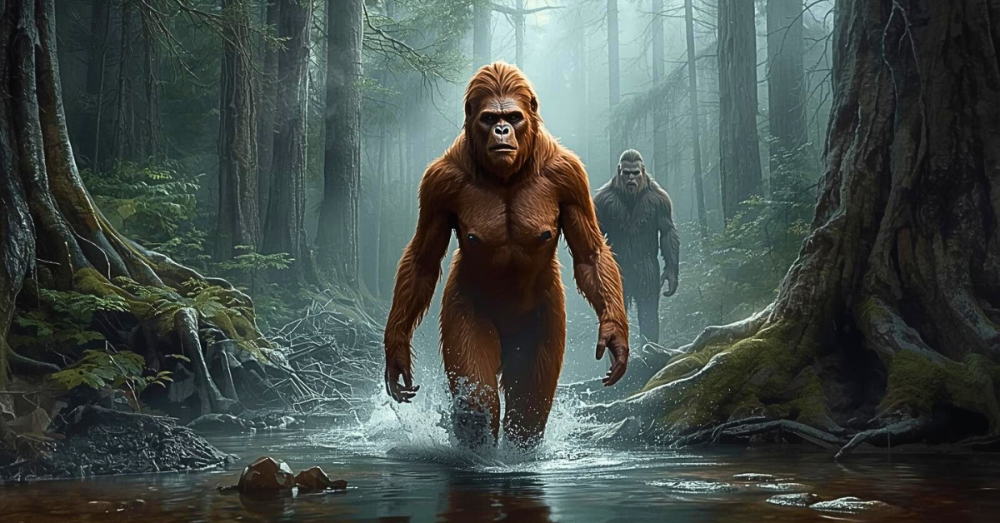
“We all talk about Bigfoot… but how often do we talk about her?”
Why This Matters
Most people picture a male Sasquatch when they hear the name large, broad-shouldered, deep-set eyes, and moving with territorial confidence through the shadows of the forest. But if the species exists (and thousands believe it does), where are the females?

Wildfoot Disclosure & Invitation
As an Amazon Associate I earn from qualifying purchases.
Some of the links in my blog posts are affiliate links to Amazon. This means I may earn a small commission if you decide to make a purchase, at no extra cost to you. These links are here to explore freely, with no pressure or obligation.
My blogs cover everything from Bigfoot theories and paranormal research to survival tips and personal stories. When I mention a book, tool, or piece of gear, it’s because I believe in it, use it, or have taken time to research it thoroughly.
You’ll also see connections to my other platforms, including TrailForge Gear and Paranormal Curiosities Realm all part of the same mission: to explore the unexplained and share what I find.
Thanks for reading, sharing, and supporting independent storytelling.
Shawn Thomas
Author & Creator of The Hidden Bloodlines of Bigfoot
Founder of Wildfoot Explores
This blog dives into:
- Why male Sasquatch are reported more often
- What the Patterson-Gimlin film may have really captured
- Sightings and characteristics of female Sasquatch
- Behavior, parenting, and potential tribal dynamics
- Open questions we need to ask
- The powerful idea that maybe — just maybe — the female Sasquatch has been the key all along
The First Real Footage Was Her
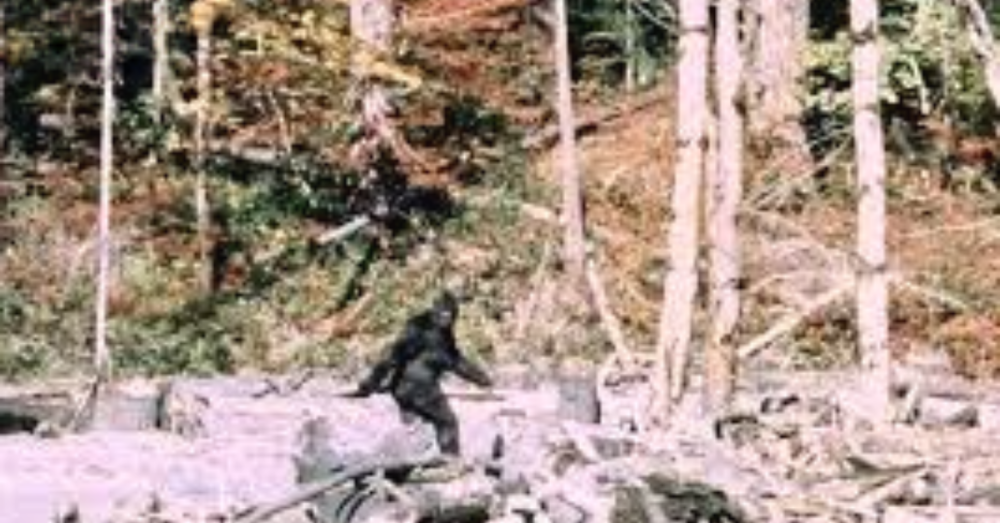
Let’s begin with a fact that often gets overlooked:
The most famous footage in cryptozoology, the Patterson-Gimlin film of 1967 the one that launched modern Bigfoot culture was not of a male.
It was a female Sasquatch.
You can even see the breast contour as she walks away across Bluff Creek.
Roger Patterson and Bob Gimlin didn’t just capture a Bigfoot…
They caught Patty.
And for over 50 years, she’s quietly stood as the first real visual record — maybe the most important — and we rarely stop to honor that.
Why Are Male Sightings More Common?
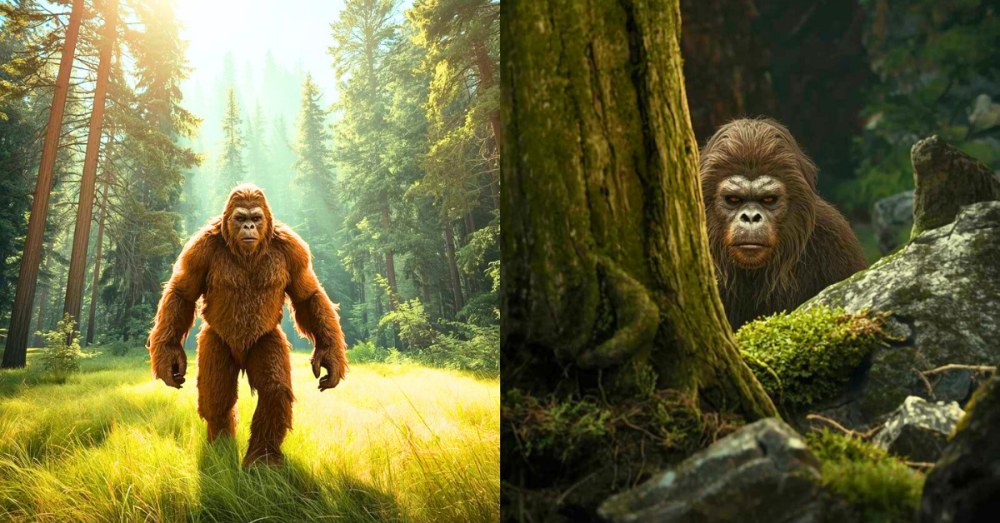
There are several potential reasons:
1. Territorial Behavior
Males may be more likely to roam, challenge threats, or patrol a wider area. This could lead to more encounters.
2. Protective Instincts
Females may stay deep in cover, protecting young or avoiding danger altogether.
3. Selective Intelligence
Some theories suggest the species is highly intelligent, possibly avoiding human contact on purpose and females may be even more cautious than males.
4. Misidentification
Many reported sightings are brief, from far away, and often leave no time to determine sex. The assumption defaults to male unless clear evidence (like Patty’s) suggests otherwise.
Traits of the Female Sasquatch (Based on Reports)
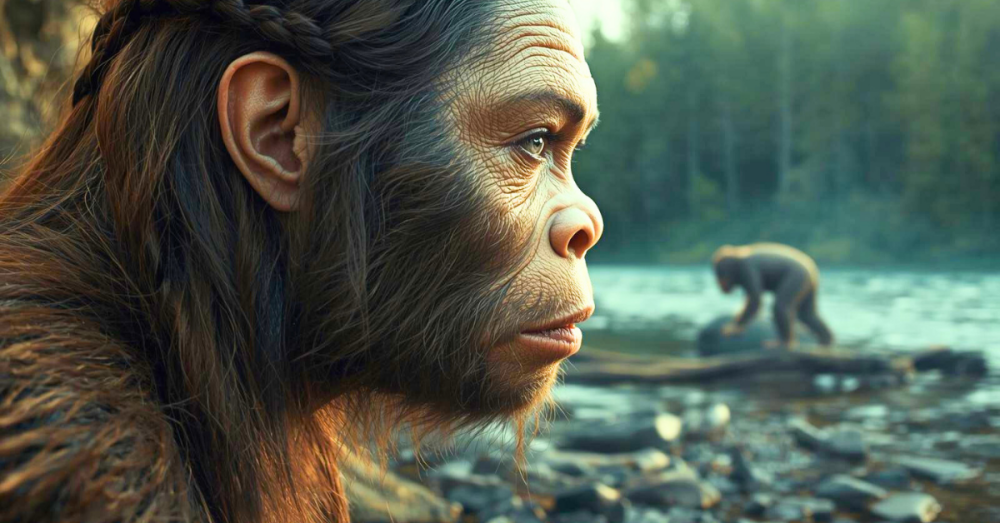
- More slender but still extremely muscular
- Visible breasts in multiple sightings (noted in Patty and other testimonies)
- Shorter stride but incredibly agile
- Often seen near water sources, like creeks and rivers
- Sometimes with smaller creatures nearby (possibly juveniles)
Witnesses have reported softer facial features than males, but still non-human and powerful in presence. One report from British Columbia described a female Sasquatch braiding grass in a meadow, motioning calmly for the observer to leave suggesting intentional, intelligent behavior.
The Mothers of the Forest?
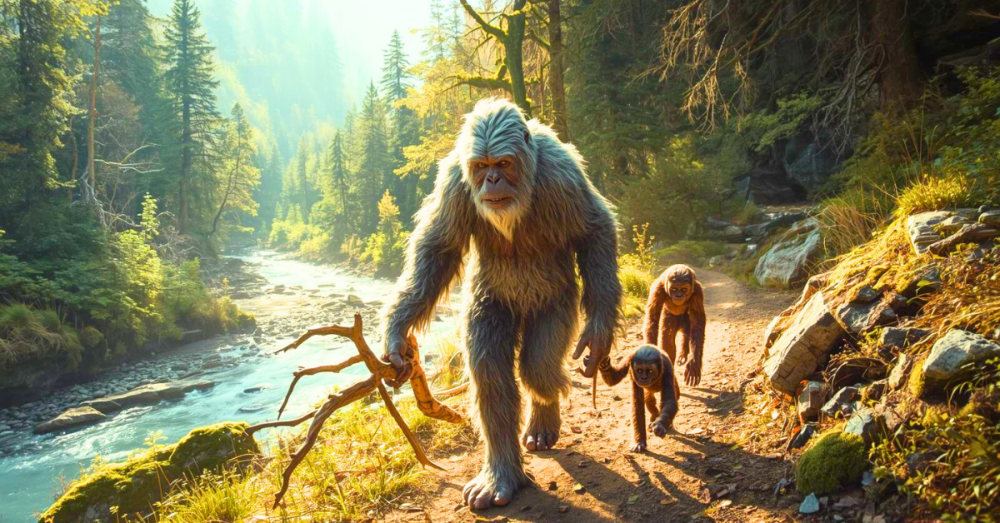
If this species exists in tribal or family groups (as many believe), then the female may be the matriarchal core.
Much like elephants or gorillas:
- The females raise and teach the young
- They may lead movements through the terrain
- They are likely cultural memory keepers those who remember where to find food, shelter, or even how to avoid humans
Some Indigenous legends even describe Sasquatch women as spiritual protectors of sacred groves and wild mountain areas.
What We Need to Ask
- Why is Patty still the only clear female image we have?
- Are we overlooking important sightings because we assume Bigfoot is male?
- Could the males be more likely to fall into confrontation while the females hold the culture together quietly?
- Is there a maternal pattern behind some of the gifting behaviors (apples, flowers, stacked rocks)?
- Are we mistaking the species’ true intelligence because we haven’t watched her closely enough?
What the Evidence Suggests
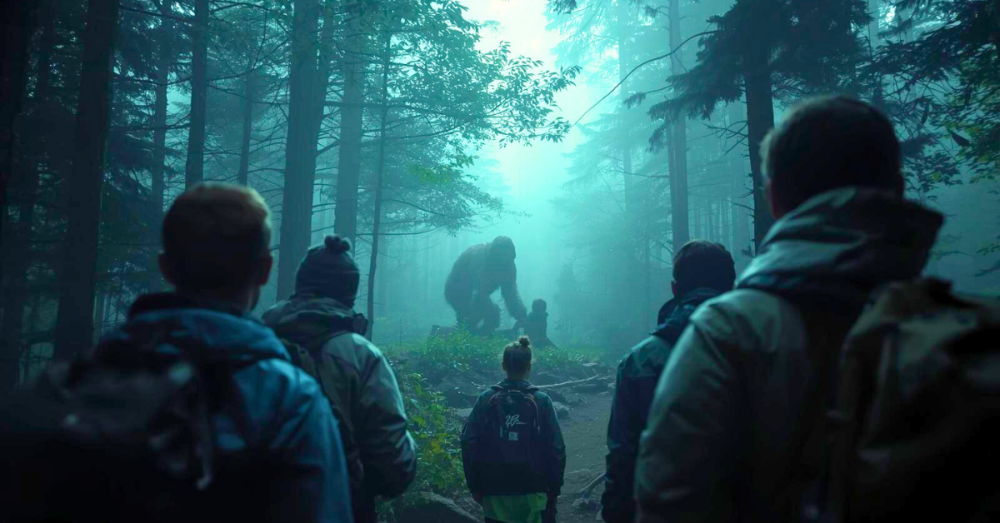
- More sightings occur near riverbeds, like in the image you shared.
- Witnesses say females often look directly at them not in panic, but with purpose.
- The quiet ones in the back of the line during sightings? May be the mothers, protecting the trail.
One researcher theorized that males are sent ahead to act as decoys, while the females and young escape deeper into cover. If true, then nearly every “solo male” sighting may be a deliberate distraction.
The Art of the Female Sasquatch
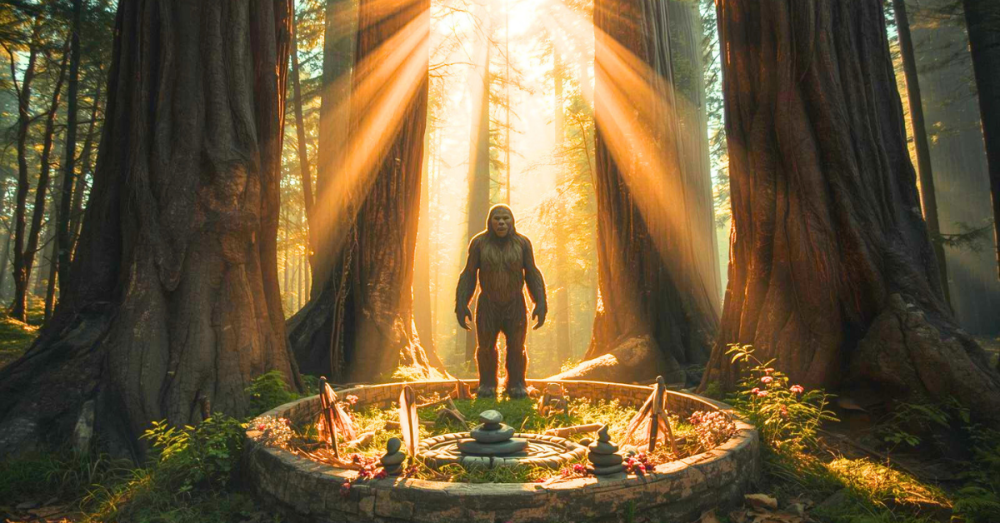
The image in this post is our artistic interpretation on the left, a male guarding a path, and on the right, a calm but powerful female crossing a stream, alert and agile. She’s not running. She’s thinking.
That’s what makes this image so special.
Final Thought
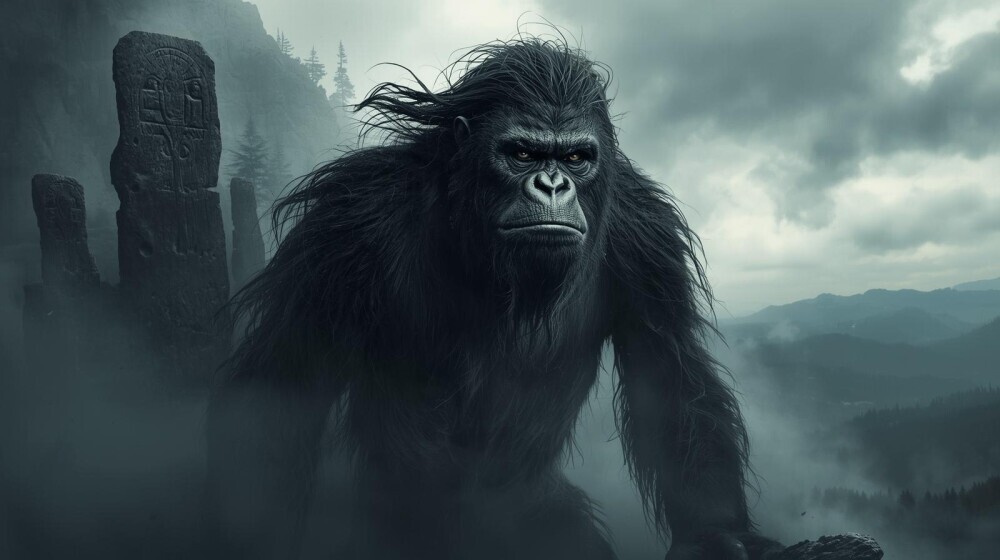
We chase the legend, we follow the tracks, we wait for the right footage…
But maybe it’s been in front of us all along.
Maybe she’s been watching us watching how we treat the land, how we hunt her kind, how we forget the ancient stories that once honored her presence.
Maybe the female Sasquatch is not the missing link…
Maybe she’s the keeper of it.
Let’s Talk About It
🔎 Have you ever read or heard of a sighting involving a female Sasquatch?
🧭 Do you think she’s more intelligent—or just more cautious—than the males?
💭 What do you believe is the reason sightings of her are so rare… and so powerful when they do happen?
👇 Drop your thoughts in the comments, or message me directly.
This blog is just the beginning.
👉 Explore real encounters people have shared on the Encounter Page you might be surprised what patterns emerge.
📝 Dive deeper into stories and theories on our main blog.
🎥 And revisit the original moment the world met a female Sasquatch The Patterson‑Gimlin Film: Real Sasquatch Proof Or Just A Brilliant Hoax?
The mystery continues.
The matriarch watches.
I’ll admit, I’m a skeptic when it comes to these kinds of things actually existing. But, that doesn’t mean I don’t love to think, read, and learn about them. While it takes some convincing for me to believe, I love diving into the details of mysteries, unsolved anomalies, conspiracies, etc. So, this was a super cool read. I’ve never really thought about a “female sasquatch” before! Such a cool idea, and it really does make sense – how can any species exist without the females?
I also appreciate the suggestion that females are more cautious and intelligent than males; if I’m to believe anything about these creatures, it’ll be this.
Just out of sheer curiosity, where did the name “Patty” come from for the infamous sighting of a suspected female sasquatch?
Hey Steph thanks so much for jumping in with such an open mind!
I totally get where you’re coming from. You don’t have to be a full-on believer to find this stuff fascinating the mystery alone is enough to pull us in. That’s kind of where my journey started too: curiosity first, belief second.
You nailed it with the female Sasquatch insight if a species exists, there has to be a breeding population, right? And if they’re real, it actually makes sense that the females would be more cautious, smarter about exposure, and less likely to be spotted. That alone could explain why sightings are so rare.
As for “Patty” awesome question.
The name comes from the Patterson-Gimlin film, which was shot in 1967 by Roger Patterson and Bob Gimlin.
They captured a now-famous clip of what appeared to be a female Sasquatch walking through Bluff Creek, California.
Because it was Roger Patterson who filmed it, people started casually referring to the creature in the film as “Patty” short for Patterson’s Bigfoot. Over time, the name stuck in both pop culture and cryptid circles.
Appreciate you diving into the read even from a skeptic’s seat. That kind of curiosity is exactly what keeps these stories alive.
Let me know if you ever want more rabbit holes to explore I’ve got a library full of them.
Wildfoot Explores
Shawn
This is such a fascinating perspective, Shawn. Too often, cryptid discussions default to the image of a lone, towering male, yet the Patterson-Gimlin film reminds us the first iconic glimpse may have been of a female. Your exploration of how protective instincts, intelligence, and cultural memory could make the female Sasquatch more elusive feels both compelling and respectful. I especially appreciate the connection to matriarchal structures in elephants and gorillas — it reframes the narrative from brute strength to wisdom, nurturing, and quiet leadership. The idea that males may act as decoys while females safeguard the group is striking, and it challenges us to rethink reported encounters. If Sasquatch exists, perhaps the mothers of the forest truly hold the key to understanding the species, both biologically and spiritually. Thank you for spotlighting Patty’s role and inviting us to look deeper into the mystery.
Really appreciate that, Andrejs. You picked up on exactly what I hoped readers would feel that quiet strength, intelligence, and protective instinct that often goes overlooked in these legends. So much focus is put on aggression or size, but the real story might be in the shadowed roles these matriarchs play. “Patty” wasn’t just a glimpse, she was a statement. And if those females are still out there, leading the way in silence… that changes everything. Thanks again for such a thoughtful comment.
Shawn | Wildfoot Explores????????